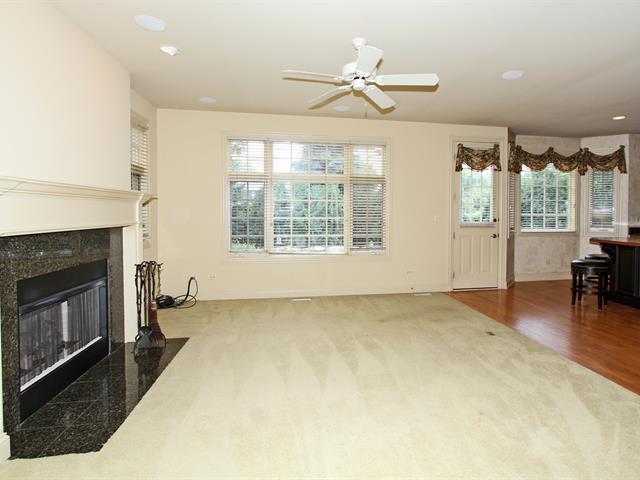Home Staging Tips: Furniture doesn’t belong shoved up against the walls.
As a professional Chicagoland Home Stager, it always amuses me that buyers have a difficult time understanding that furniture “floating” in the room can be a great option for open concept floor plans. Never the less, in many, if not most, cases while buyers say that they love the open concept homes, they just don’t know what to do with them when they are presented vacant.
Floating furniture can help define a room.
Perhaps the issue buyers have is that they just don’t understand size and scale, or that they simply don’t have the imagination to see beyond what is actually present in the home. Universally, rooms with only one real wall, become completely confusing for nearly never home buyer.

When it’s clear that one wall is actually on the other side of a walkway needed for the room to function (enter and leave the space), sellers instinctively know that furniture can’t go there. When the other wall isn’t deep or long enough or interferes with the focal point of the room, they tend to give up.
Understanding size and scale is the key to floating furniture.
Not all sofas are the same size. Color, texture, and height can dramatically alter the way a room feels when the sofa presents its back to a space. As professional home stagers, we need to be careful not to create an imaginary wall with our furniture pieces, but still make the room feel functional and comfortable for daily living.

This particular home in Lisle, IL had been on the market for 32 months without an offer. The likely explanation was simply that buyers didn’t understand how furniture would work in this room. Because layout was an issue and the only wall that furniture could have been pushed up against was actually too short for an average size sofa (to not crowd the fireplace) staging was a key ingredient to a successful sale.
This home was staged on 12/01/2013. After staging this home was under contract in 12 days and closed on 1/20/2014.
Chicagoland Home Staging professionals understand the problems that buyers face. Often buyers don’t realize that their purchase aversion is the layout of a room, they often believe it is size. When clearly identifying how a space should function and flow, the guesswork is removed and a quick sale becomes possible.




